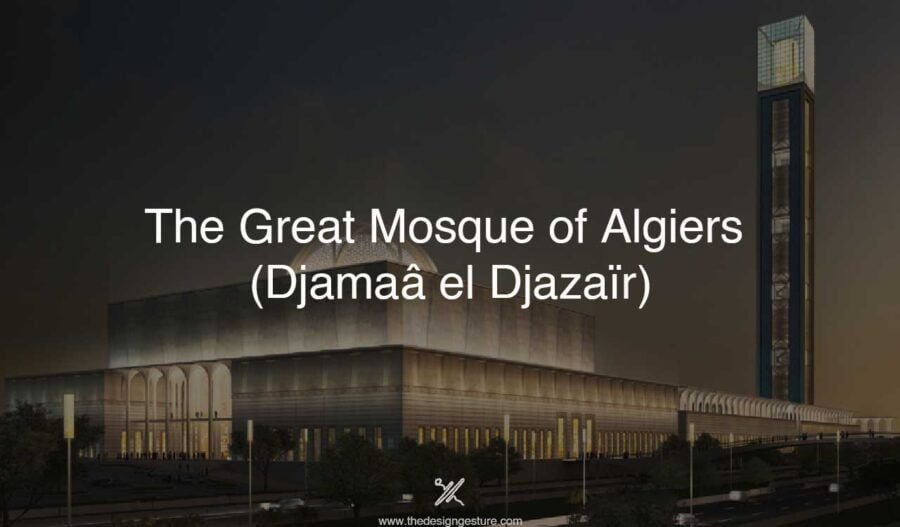Table of Contents
Introduction
Imagine checking into an accommodation that’s more than just a place to sleep—it’s a hub of adventure, culture, and a gateway to unforgettable memories. That’s the magic of hostel architecture. Hostels have come a long way from their humble beginnings as budget accommodation options for backpackers and budget travelers. Today, they are an exciting canvas for architectural design. Hostels have become landmarks in themselves, embodying modern design concepts, sustainability, and a strong sense of community. Contemporary hostels are reshaping the way we think about travel and communal living.
The Rise of Hostels
The concept of hostels traces its origins to early 20th-century Europe when the need arose for affordable and practical lodging options for young travelers and backpackers exploring the continent. These early hostels were utilitarian in design, emphasizing budget-friendliness over luxury. They typically featured dormitory-style accommodations with shared facilities, catering primarily to the needs of travelers on a tight budget. However, as travel trends have evolved, so too have hostels. Today, hostels are transformed into fashionable and comfortable accommodations for tourists of any age, with their offers including single rooms, separate bedrooms with bathroom units, and different common space varieties.
Essentially, the emergence of hostels cannot be regarded merely as an opportunity for economic accommodation; instead, this phenomenon points to changes in our understanding of travel and lodgings. The modern hostel has changed the meaning of communal living. This evolution in both services and architecture has elevated hostels from humble beginnings to become sought-after destinations in themselves, embodying the changing desires of travelers.
Design Elements that Matter
The soul of a hostel lies in its design elements, going beyond mere functionality to create a sense of place and belonging for travelers worldwide. Hostel architecture today is a dynamic reflection of local culture and aesthetics, immersing travelers in the essence of their surroundings. From murals by local artists to the incorporation of traditional architectural features, hostels have embraced the role of cultural ambassadors. They provide guests with a more immersive experience, allowing them to connect with the destination’s unique identity.
At the heart of hostel design is the emphasis on community. Hostels are designed to foster a vibrant sense of community among travelers, and architects create spaces that encourage social interaction and cultural exchange. These community-centric spaces include well-equipped communal kitchens where guests can prepare meals together, cozy lounges with diverse seating options for relaxation and storytelling, and event spaces hosting cultural events, workshops, and activities, enabling travelers from various backgrounds to interact and learn from one another. These spaces not only redefine hostel architecture but also enrich the overall travel experience.
Innovative Design Trends in Hostel Architecture
Today, hostels are architecturally innovative, as designers recognize their potential to blend unique design concepts with functionality and aesthetics. Key trends in hostel architecture exhibit this evolution. Many hostels find their homes in historic buildings, such as old factories or warehouses, where architects adeptly repurpose these spaces into inviting hostels while preserving their historical charm. The new models of modern hostels are sustainable, and they incorporate eco-design elements such as energy-efficient lights and rainwater harvesting systems, among others, to reduce the environmental footprint.
Furthermore, pod-style sleeping arrangements optimize space and provide a comfortable, private sleeping experience. This integrated approach redefines hostel architecture, transforming hostels into culturally immersive and sustainable destinations. Additionally, hostels embrace the latest technology trends with features like smart locks, mobile check-ins, and digital kiosks for a seamless and secure guest experience. High-speed Wi-Fi and charging stations are now standard amenities, enhancing the overall travel experience.
De-Hostel, Taiwan
De-Hostel, nestled in the picturesque countryside of Zhutian in southern Taiwan, stands as a remarkable fusion of history and contemporary architecture. Originally built in 1942 as the Dexing Rice Factory, this structure embodies the region’s heritage. Studio APL embarked on a transformational journey to regenerate this historical grain bureau into a mixed-use space, creating a harmonious blend of tradition and modernity. The architectural team preserved the old structures, paying homage to the disappearing traditional Hakka building typology. They achieved this by employing local materials and construction techniques, ultimately giving birth to a new neighborhood relationship deeply rooted in the local culture.
The hostel features 51 voids, creatively integrated into the old wooden beams, which now serve various functions like windows, wind openings, and memory spaces. The exterior showcases meticulous craftsmanship with a unique texture resembling rice grains. It is comprised of six-bed backpacking dorms, private rooms, and common areas, including a semi-public courtyard, where visitors can mingle and interact while staying there. De-Hostel stands as a testament to the transformation of historical structures into modern communal spaces while preserving the memories of the past and fostering new neighborhood relationships.
Micro-Hutong Hostel, China
Located within the historic and vanishing hutong neighborhoods of Beijing, the Micro-Hutong Hostel is an architectural marvel designed by architect Zhang Ke and his studio, ZAO/standardarchitecture. A hutong is a narrow, historic alley or lane found in Chinese cities like Beijing, characterized by its interconnected courtyard residences and serving as a window into traditional Chinese urban life. The hostel is a testament to the rich cultural heritage of the hutong while showcasing creative architectural design. The hostel’s compact 30-square-meter rooms project at angles into a central courtyard, creating a dynamic interplay of light and space.
The rooms’ rough, irregular concrete finish complements the hutong’s aged character, achieved using Chinese ink-infused concrete. On-site pouring and wooden formwork ensured control over appearance and texture. The Micro-Hutong hostel showcases small-scale social housing within Beijing’s traditional hutong, making it an attractive destination for backpackers and travelers seeking an authentic experience in this ancient city. The Micro-Hutong hostel ingeniously utilizes space, with the ground floor housing the kitchen, dining areas, bathrooms, and connecting corridors. Upstairs, a bedroom, study, teahouse, and terrace are strategically positioned to maximize light and ventilation while preventing a sense of confinement.
The COO Boutique Hostel, Singapore
The COO hostel and bistro in the vibrant Tiong Bahru neighborhood of Singapore presents an innovative concept targeting design-savvy, budget-conscious millennial travelers. Designed by Singaporean architect Colin Seah and his studio, Ministry of Design, COO stands out as a fusion of affordability and high design aesthetics. This hostel and bistro complex encapsulates the essence of its locale, drawing inspiration from the history and architecture of Tiong Bahru.
The interior design creatively incorporates elements reminiscent of the area’s 1930s to 1950s window grilles and features graphic images and text celebrating local food, culture, and architecture. COO not only offers 68 beds across its 11 rooms but also boasts a reception, a bistro, and a charming al fresco terrace. In addition to interior design, the Ministry of Design handled the entire branding strategy, including the logo, name cards, and the bistro’s menu, and even introduced a web application, COO Connect, to facilitate digital interaction among guests.
The Dock Inn Hostel, Germany
The Dock Inn Hostel in Rostock, Germany, creatively repurposes 63 overseas containers, creating a unique lodging space. Located near the harbor, the hostel draws inspiration from the maritime surroundings and shipyard heritage. It consists of a four-story structure made from colorful containers stacked on a two-story base of steel, concrete, and glass. The ground floor includes an inviting entrance hall, restaurant, bar, guest kitchen, workspaces, and a boulder hall, all flooded with natural light through a street-facing glass front. The upper levels showcase containers in lively colors integrated into a steel and concrete framework, creating captivating industrial-style architecture.
Inside the 12 x 2.5-meter containers are functional sections with separate bathrooms and cozy upholstery in muted colors that provide various room types, from double rooms to eight-bed dorms, all with harbor views. The hostel’s communal areas offer adventure, highlighted by a central raft made of euro pallets in the open restaurant. Guests can even experiment with recipes in a lab-like galley and unwind in the harbor-view spa on the top floor. The Dock Inn invites interaction, both from pedestrians passing by and those arriving by boat, making it a lively addition to the harbor area.
PA PRANK Hostel, Thailand
The PA PRANK project in Bangkok, Thailand, involved the transformation of two shophouses into a hostel and a café in the historically rich district of Phraeng Saphasat. The architects aimed to address the common issue of insufficient light in shophouses by removing a two-meter-wide strip along the building’s side, allowing more natural light and ventilation. This area was also designed as a courtyard, creating an open and airy atmosphere. Private guestrooms were strategically placed to benefit from ample light and ventilation, and their tops were used as balconies for upper rooms.
The design seeks to contrast modern elements with the historical surroundings. A large curtain wall encloses the functional areas along the building’s depth, reflecting the well-preserved wall and offering guests views of the old walls. The front facade draws inspiration from traditional Thai shophouse windows but incorporates steel and a black color palette, giving the building a modern and distinctive appearance. In contrast, interior spaces feature traditional window characteristics and a white color scheme for a cozy ambiance. Overall, PA PRANK successfully blends modernity with historical context, providing a unique and comfortable space for travelers in Bangkok’s historic district.
ARTINN, China
In Shenzhen, China, Aether Architects, under the guidance of Zelin Huang, has transformed an ancient village house into ARTINN, a versatile hostel featuring a café, art gallery, book bar, and eight guest rooms. In this innovative conversion, Aether Architects utilized the existing cracked and deformed structural walls of the village house to create a distinctive lattice-wrapped design. The client, a native villager, had a specific vision for this space, aiming to create a co-sharing environment for both locals and visitors.
The “Structural Reinforcement Concept” was employed throughout the project, combining mechanical requirements with architectural creativity to enhance the building’s integrity while reshaping its appearance. Aether Architects used truss structures to create small units that enveloped the original building, resulting in a new architectural form that seamlessly integrated with the urban space. This transparent connector between the two structures formed a communal space for public interaction. The design focuses on blending architecture with the landscape, offering guests a nature-inspired experience.
Conclusion
Hostels have transformed from modest-budget lodgings into architectural wonders that celebrate innovation, sustainability, and community engagement. In the present day, they not only offer economical accommodations but also serve as captivating architectural landmarks that capture the essence of their locales. In an ever-evolving travel landscape, hostels are poised to remain at the forefront of design innovation, continuously pushing boundaries to craft spaces that ignite inspiration, preserve culture, and foster connections among individuals from every corner of the world.




